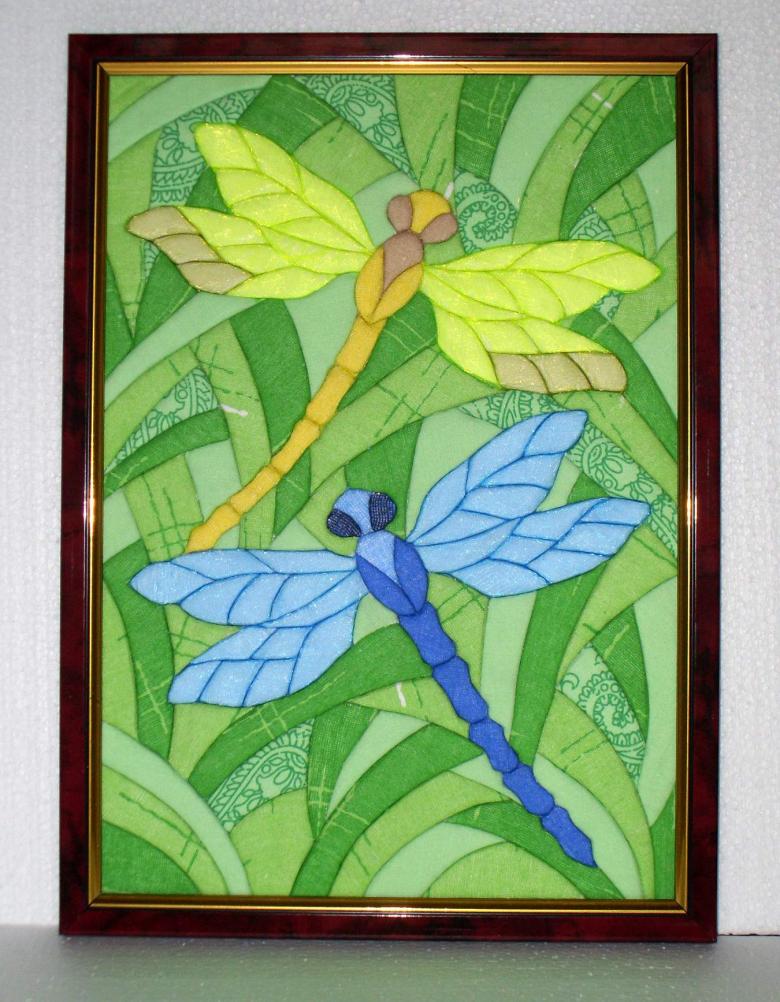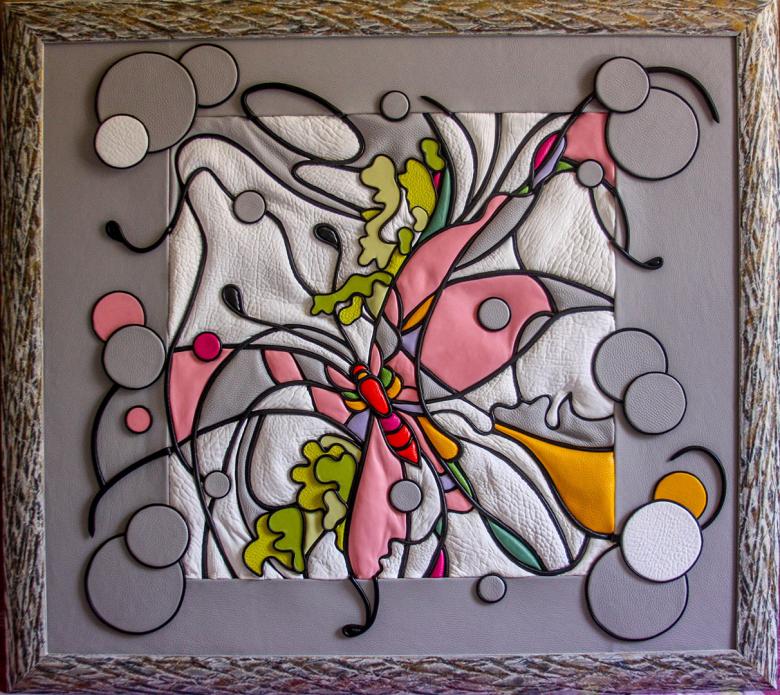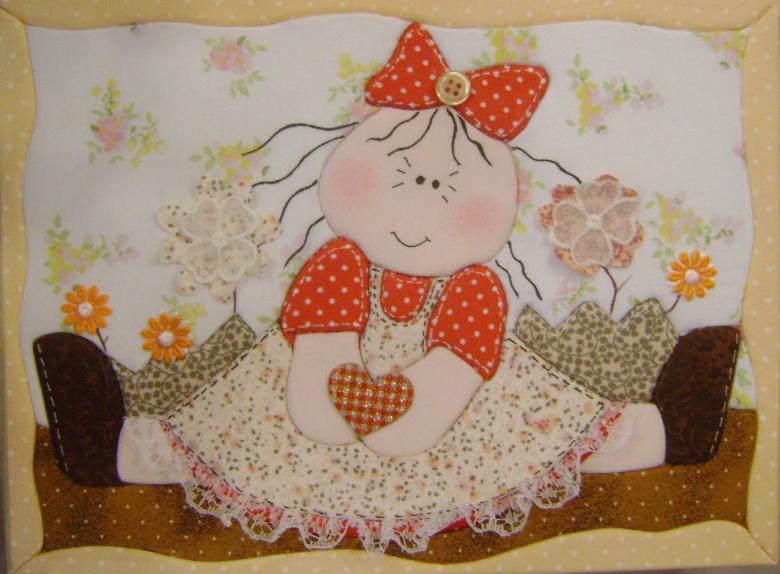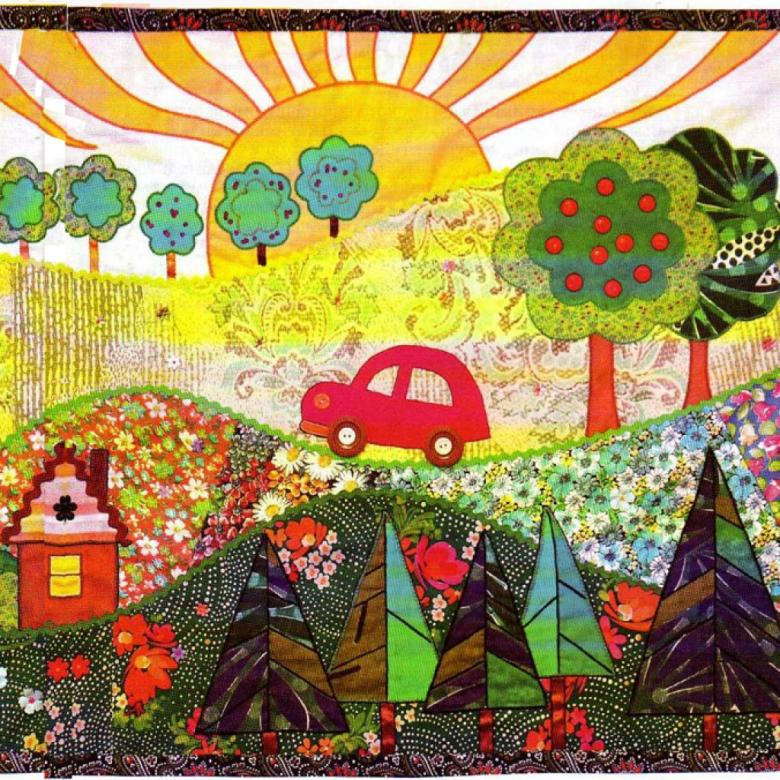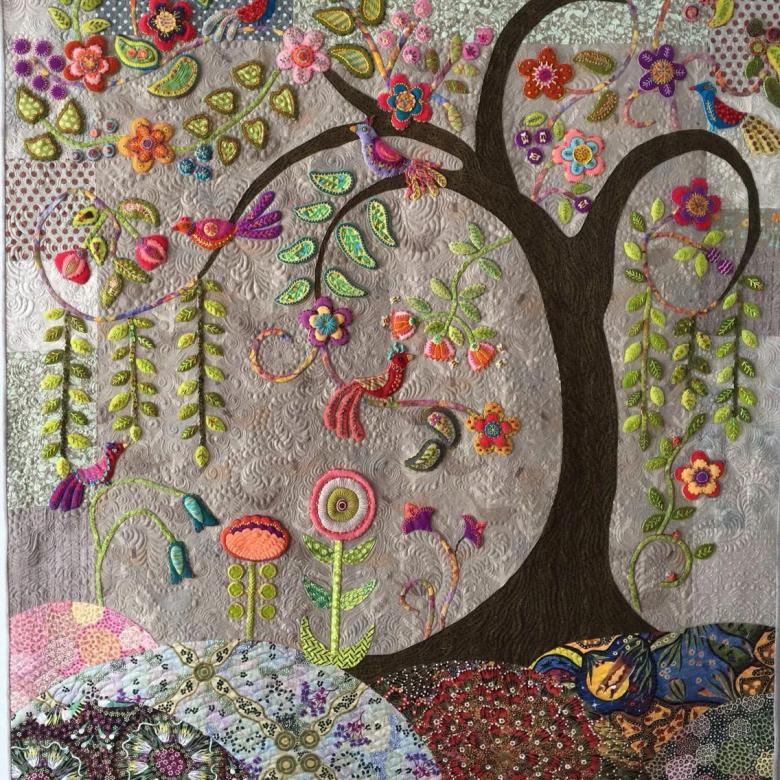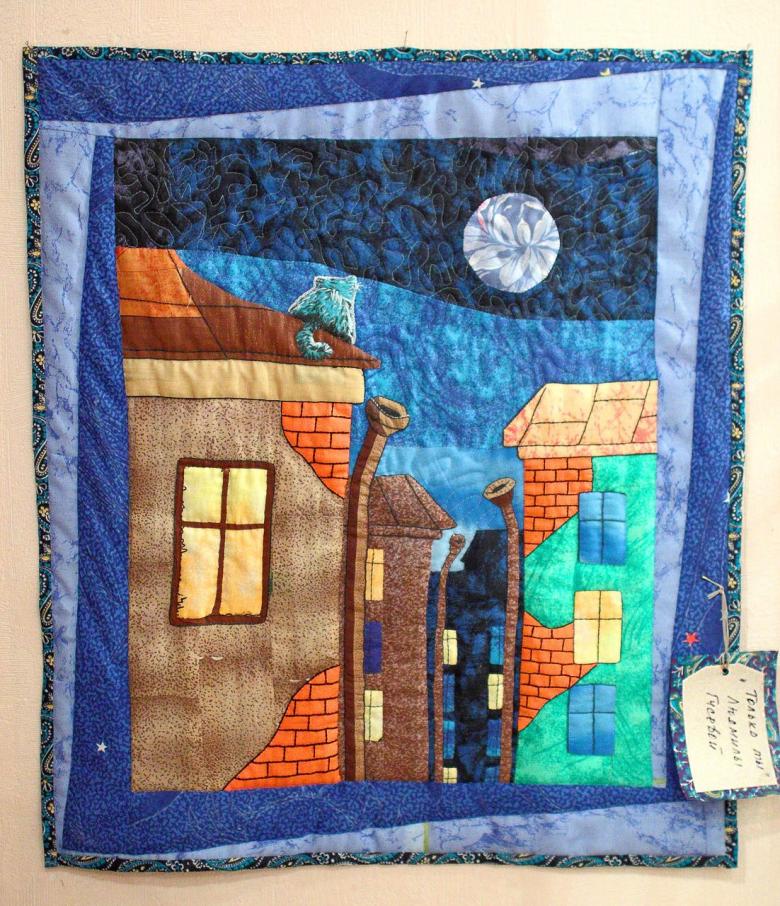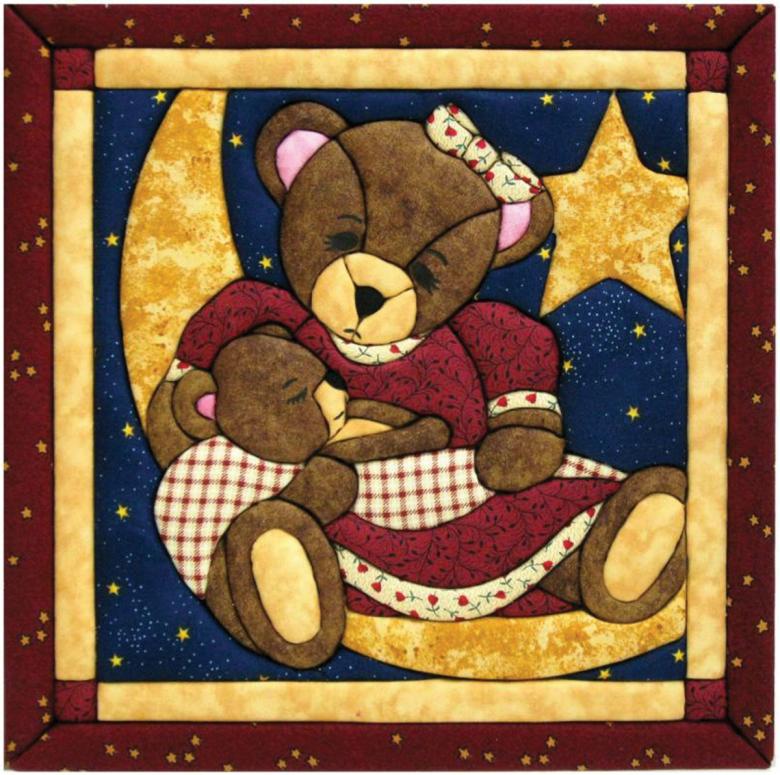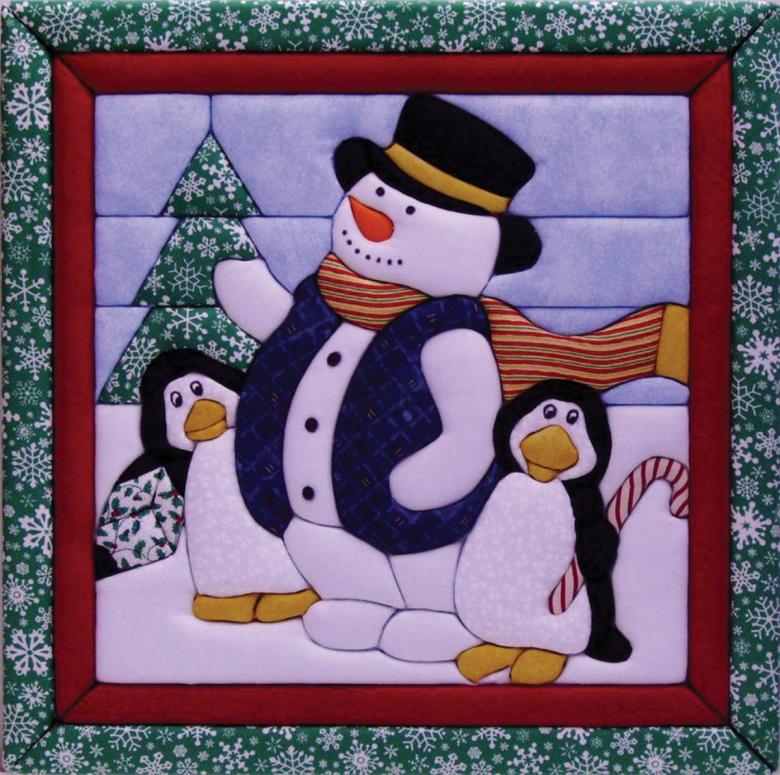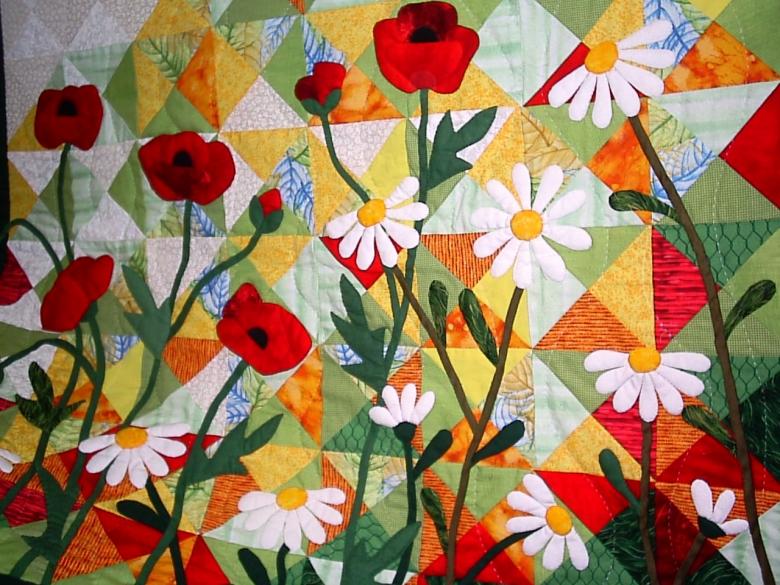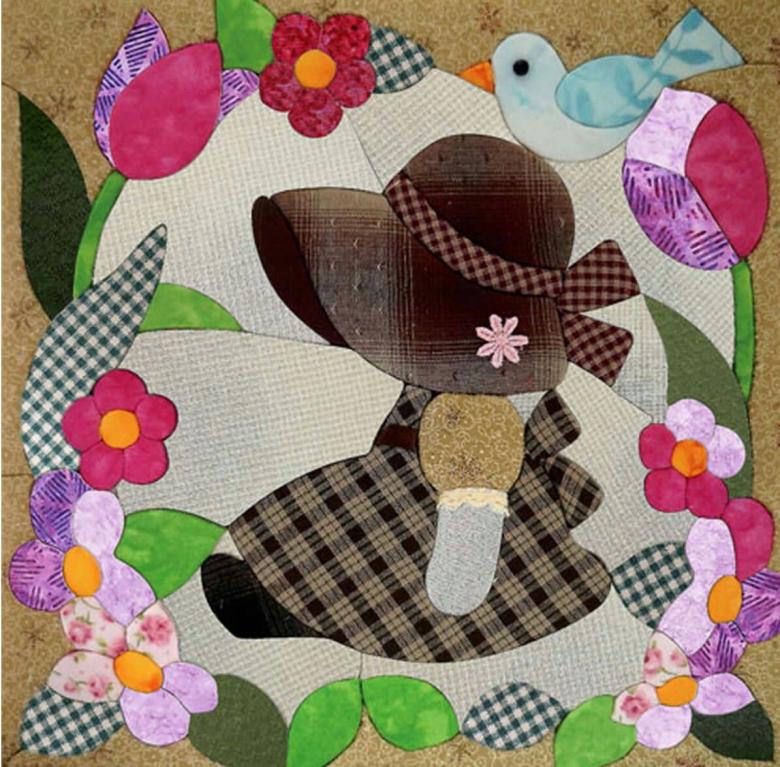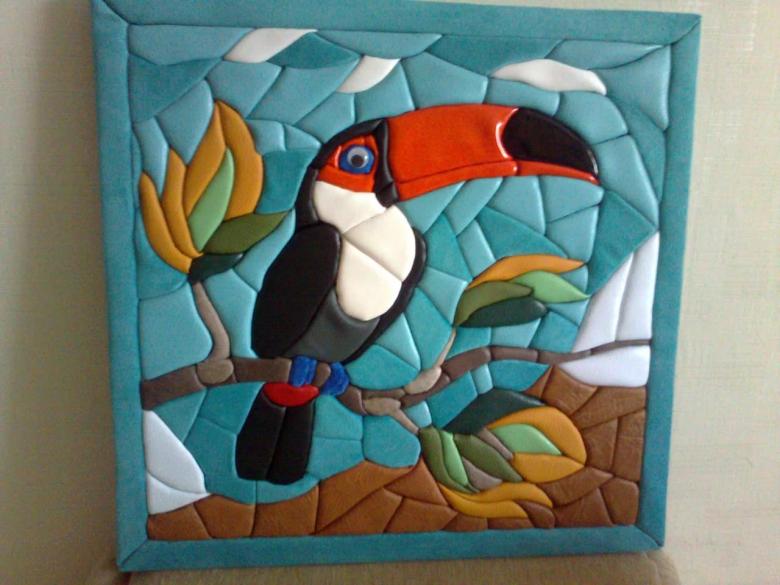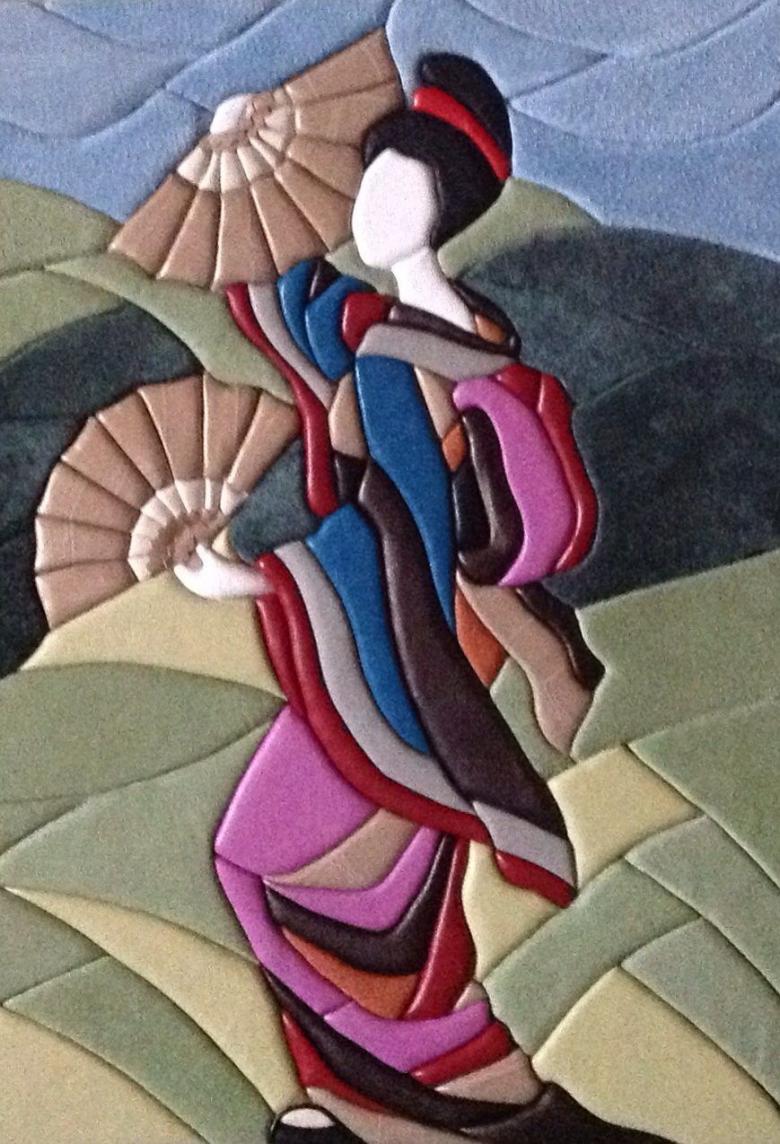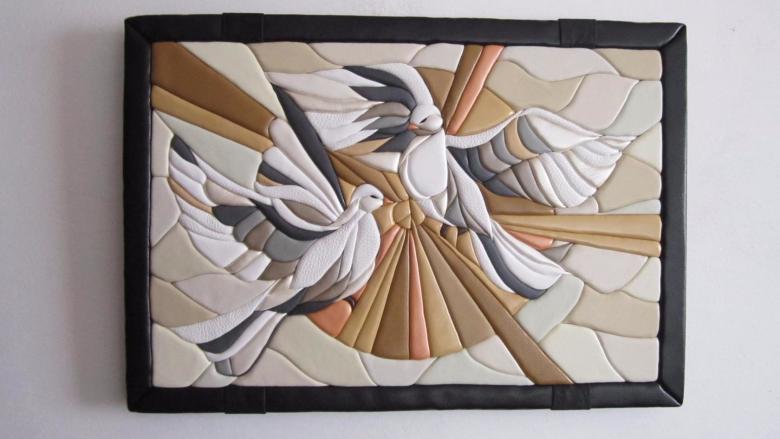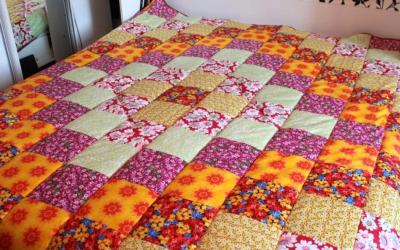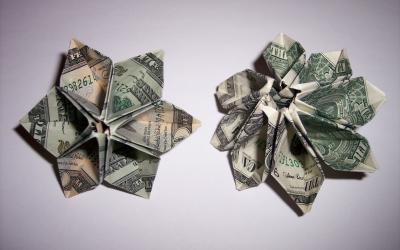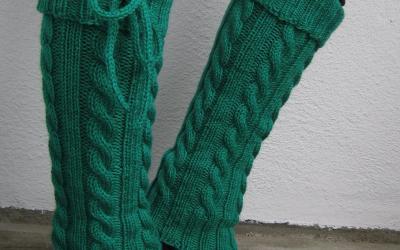Scraps of fabric paintings with their own hands: a description of simple techniques, photo examples, schemes and tips
Homemade products and handmade items at all times were considered the most popular type of decoration. Such things bring a unique character, individuality to the home.
Any person capable of holding scissors, needle and thread can make a unique picture out of artificial fiber. For the realization of such a decorative decoration there is actually no need to spend money - everything you need can be found at home.
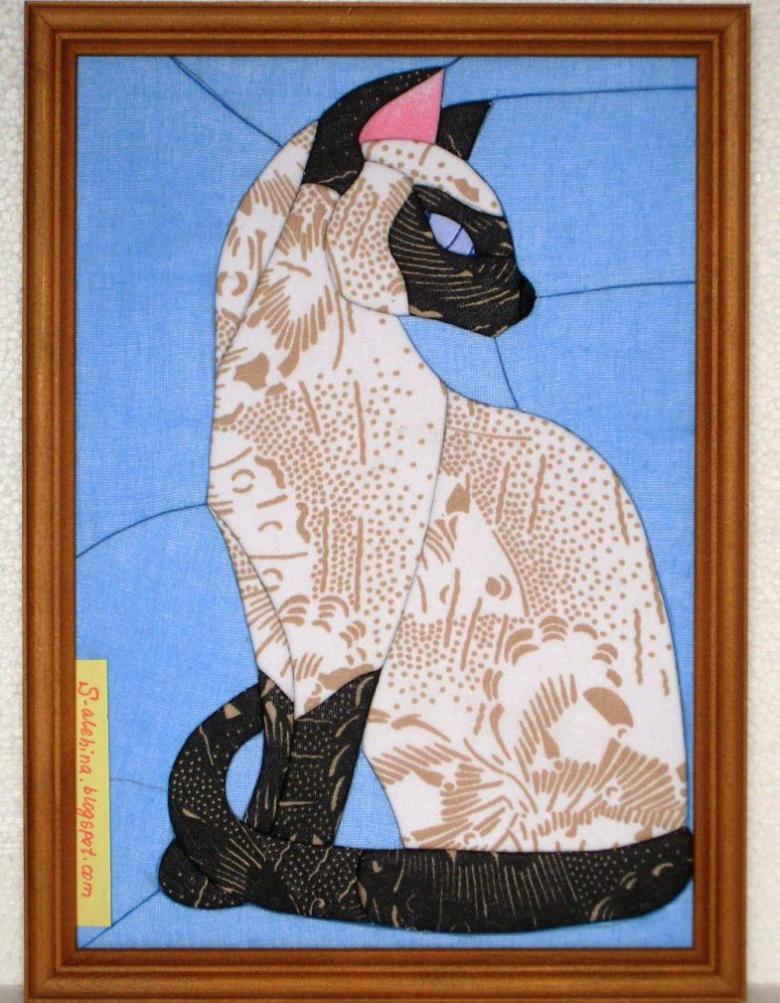
Techniques, examples
Painting on textiles is very different in design and style. It can be similar to a mosaic painted on Chinese silk, a panel, a three-dimensional pattern. The technique of creating paintings originated in the Japanese Empire, and later in Britain and the United States and in the Russian Federation.

All kinds of smooth and convex reproductions from the manufactory:
- kinusaiga;
- oshie;
- patchwork quilt;
- quilting;
- string art;
- from openwork weaving;
- of felt;
- wet fabric;
- from jeans;
- three-dimensional version.
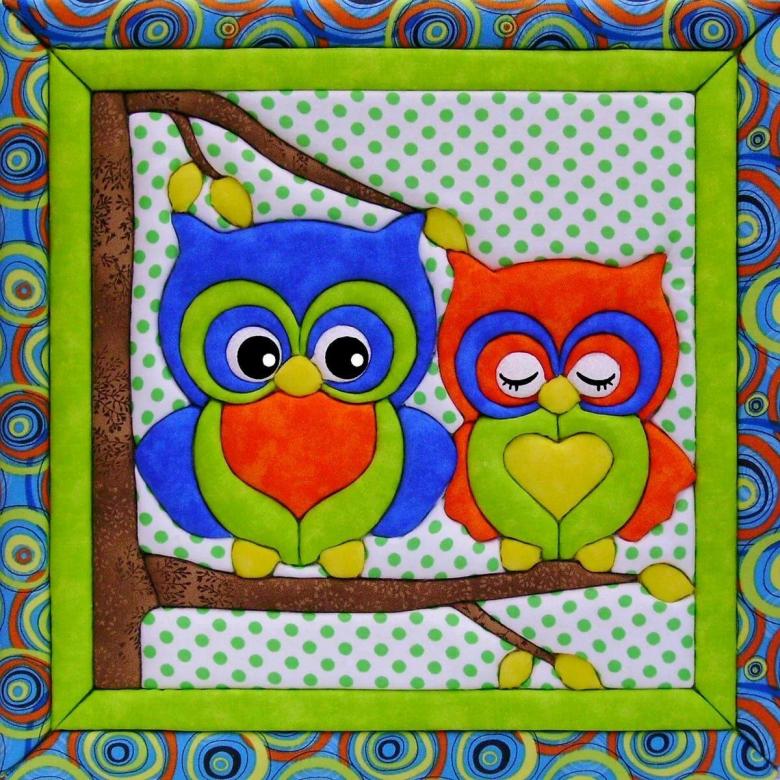
Always sketch on paper in pencil, then choose a particularly interesting kind of execution for you.

Materials
The necessary kit and raw materials for creativity slightly differ taking into account a certain type of performance. Will need:
- frame;
- a sheet of styrofoam;
- board, thick thick thick paper;
- Straight and curly scissors;
- PVA glue, glue gun;
- wool;
- colored fabrics;
- paint;
- needles, thread;
- stapler;
- iron;
- small nails;
- textiles, wood;
- plastic ornaments.

The ancient performance of embroidery
"Oshie" originated in the Land of the Rising Sun in the XVII century. It has not lost its importance in the present day. Images were made of small pieces of thick paper, wrapped in scraps of worn-out Japanese kimono.
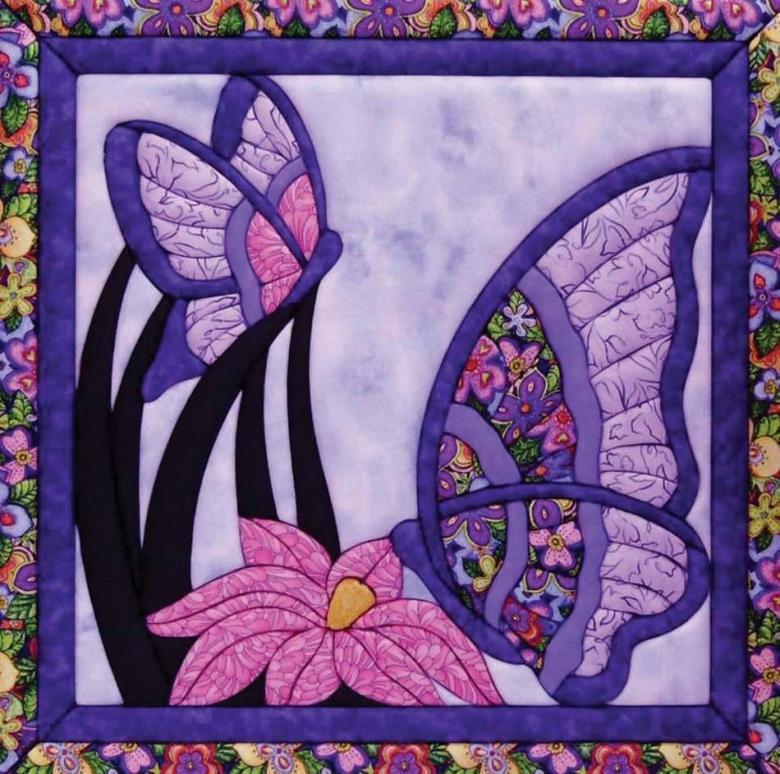
Subsequently, a special plastic paper based on mulberry silk threads was used. A distinctive feature of these images-children in traditional costumes, Japanese warriors, geisha, textured paintings with the themes of Japanese folklore.
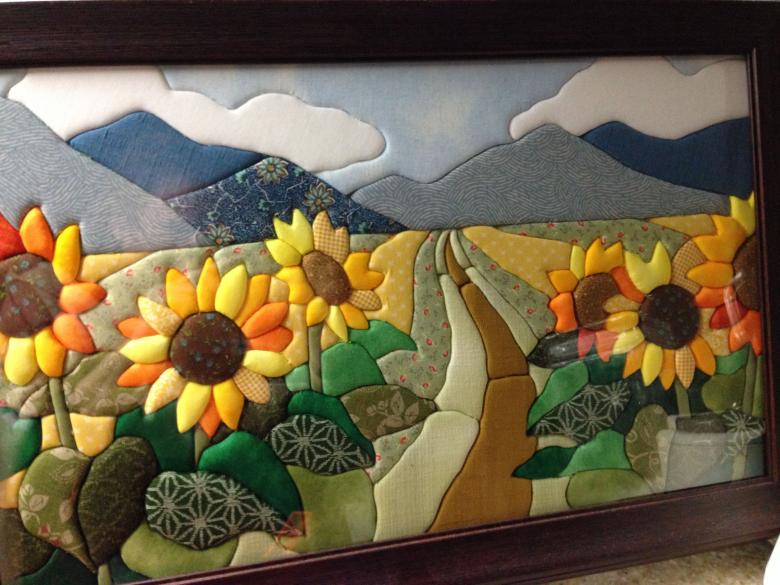
Pieces of animal skins, leather, lace, and beads are often used as auxiliary decorations.
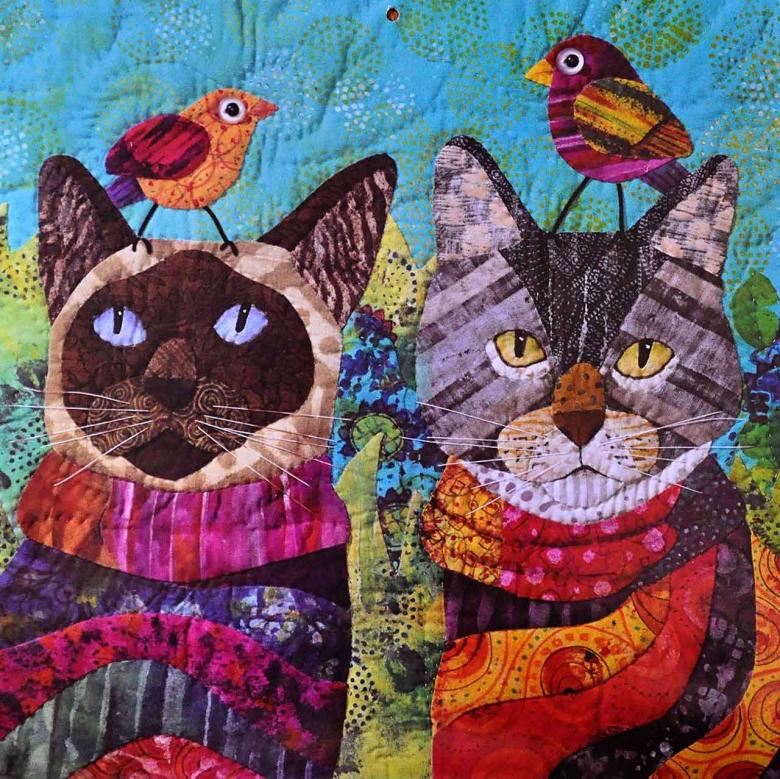
How to make:
- Cover the base with bright, and the frame with dark threads.
- Cut out the components from the paper, transfer the material.
- Glue together as close together as possible.
- Allow to dry under the press.
- Hang the artwork on several hinges.
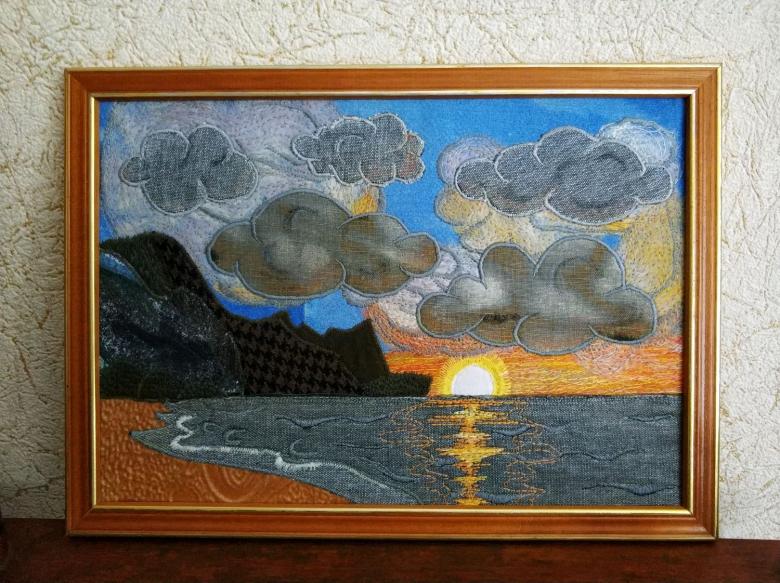
Kinusaiga
One of the hallmarks of Japanese culture is that almost every occupation grew into high creativity. Nationally, the raw material in the performance was a worn kimono, which they were ashamed to throw away.
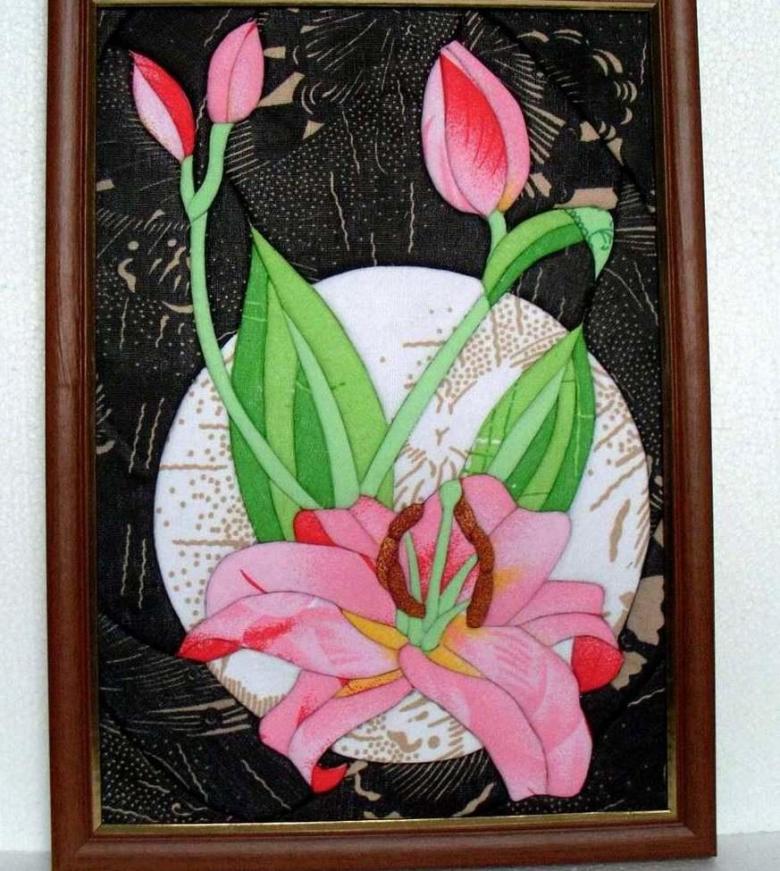
The uniqueness of amazing "patchwork without a needle" is that you do not have to sew the parts together. The silk fabric for sewing Japanese robes is strong enough.
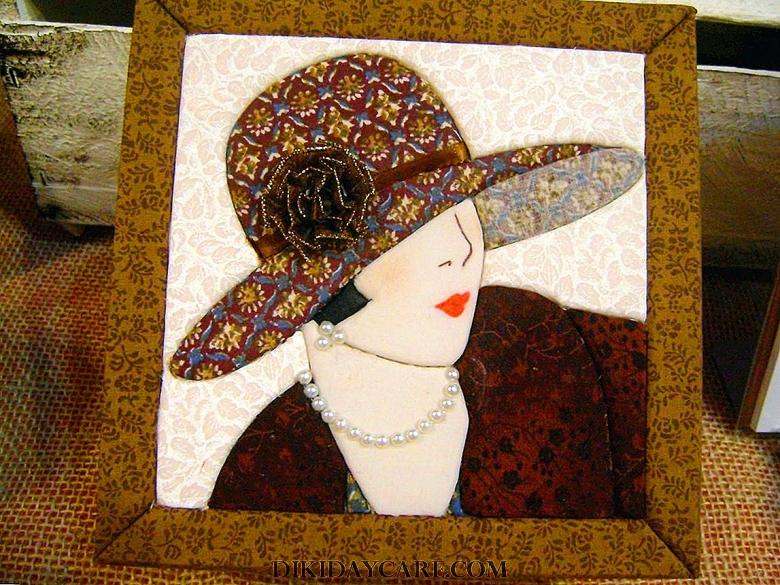
Workflow:
- First, draw a diagram of the placement of the elements.
- Transfer the sketch through a carbon copy onto the foam plastic.
- Use a cutter on the latter to make cuts along the contour of the pattern to a depth of two to three mm.
- Cut the fabric into pieces of appropriate shape.
- Insert the scraps into the workpiece with a thin object. For example, with a cosmetic file.
- Cut off all unnecessary things, and insert it into a frame.
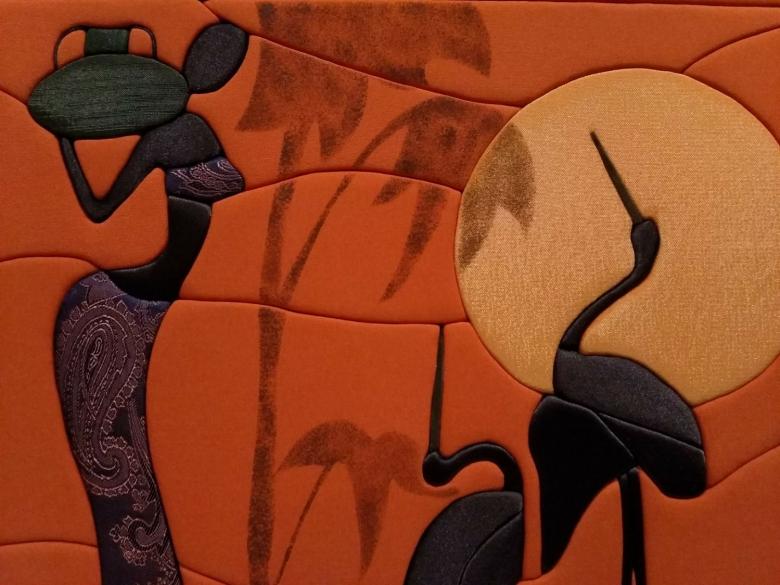
Patchwork, quilting
Patchwork art originated in the tenth century of the first millennium. In the work it is possible to use both regular fabric scraps, and parts of knitted fabrics, connected by hook and loop. Patchwork technique of sewing in one layering.
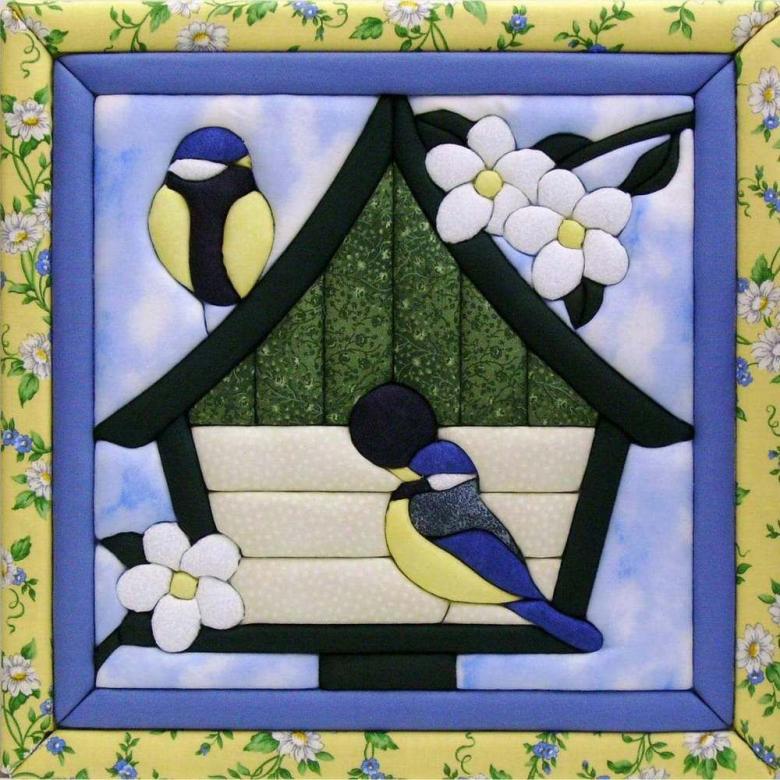
Things made in the technique of patchwork sewing, perfectly decorate the interior in the style of Provence or a country house. The filling will create a volume effect.

Quilting - volumetric, multi-layered, includes a huge variety of measures, embroidery, patterns, weaving. To give softness and volume, synthetic fibers are used, placed in the middle of each layer of patchwork mosaic.
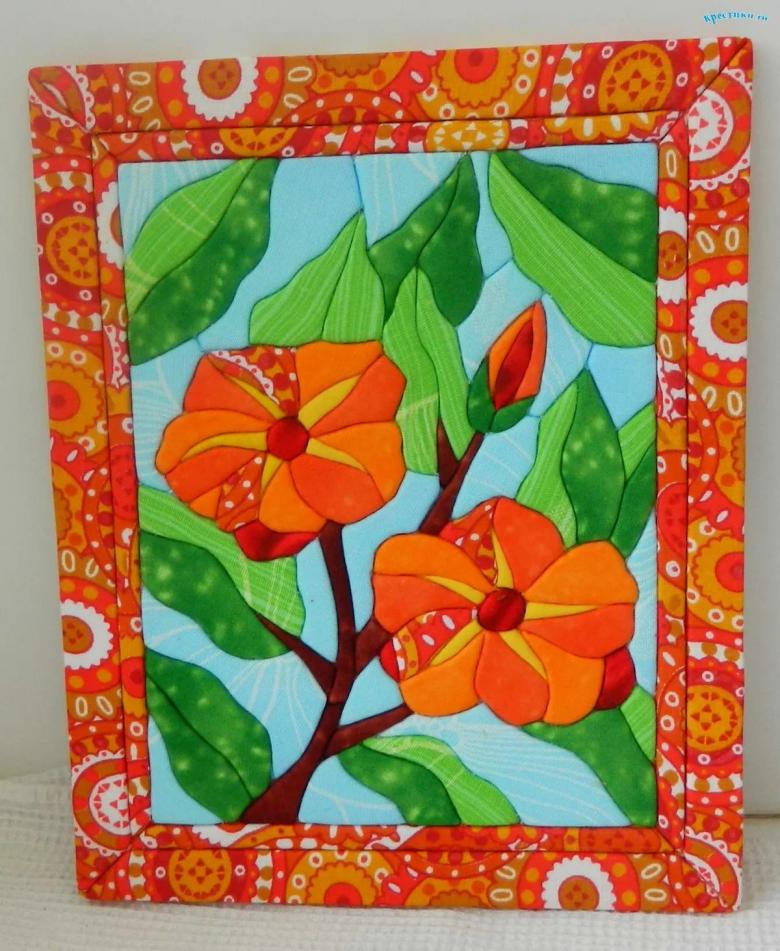
Method of execution:
- Draw a sketch. You can take a schematic picture from a website.
- Initial level-single-colored fabric, the second-filler for volume, the third-tagged ornament with embellishment.
- All sew with an automatic or manual stitch.
- Make the color of the basis monochrome or diamond.
- Sew the image.
- Sew in parallel lines, zigzag lines, circles, spirals, or random patterns.
- Use guipure, openwork, fringe braid, floral fabric patterns, and silk bows for auxiliary decorations.

Old jeans.
Comfortable in cut. Denim material, which has a variety of shades, always remains in fashion. Due to the variety of colors, stitches, from this textile can create amazing life collages, similar to traditional patchwork embroidery.
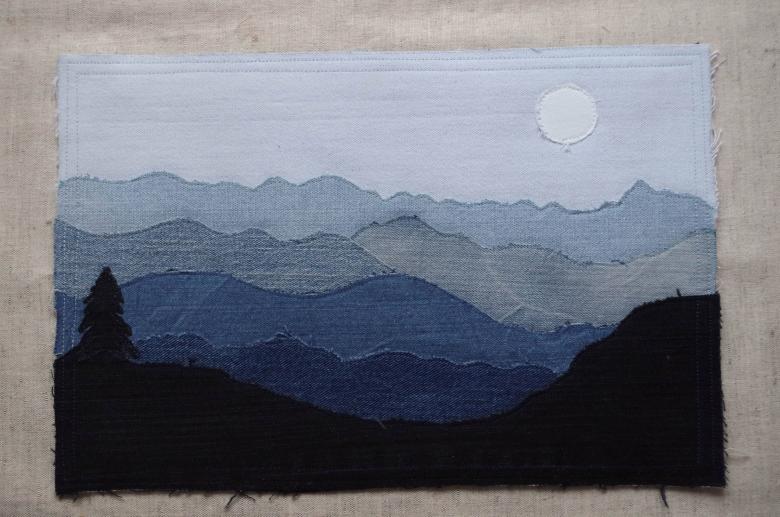
Most of the pictures are made in the technique of "denim on denim". Most often faded pieces with interesting tints are used.
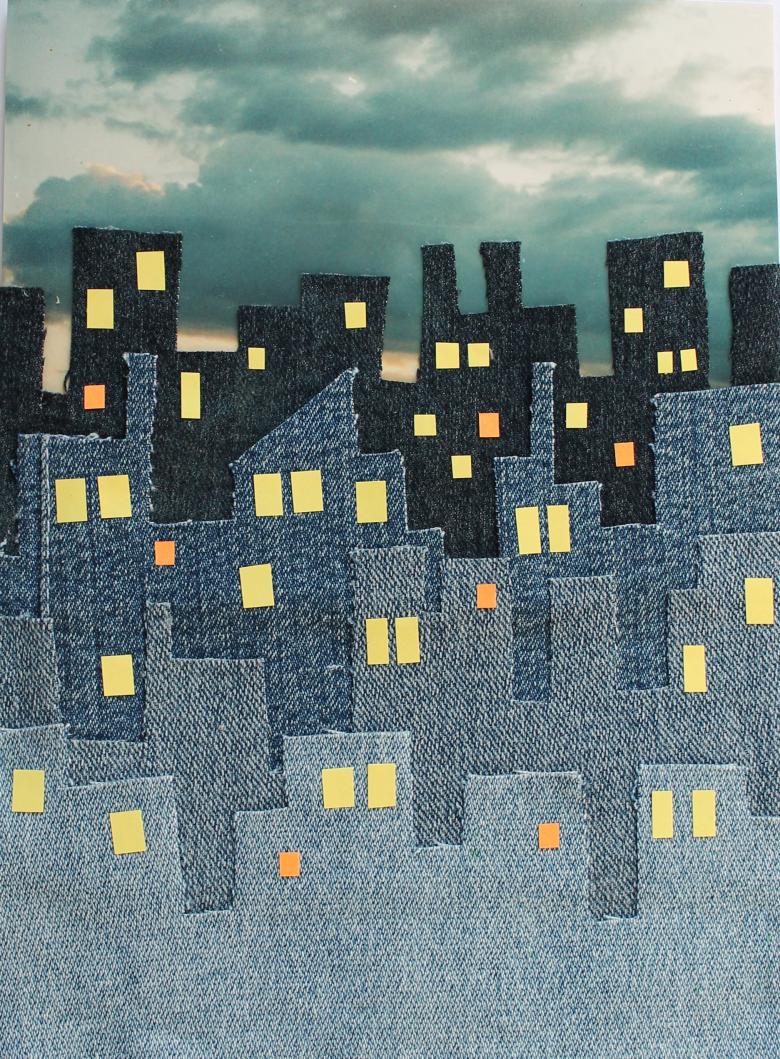
Recognized themes-city and seascapes and abstraction. Denim words look best with a darkish or distinct backdrop.
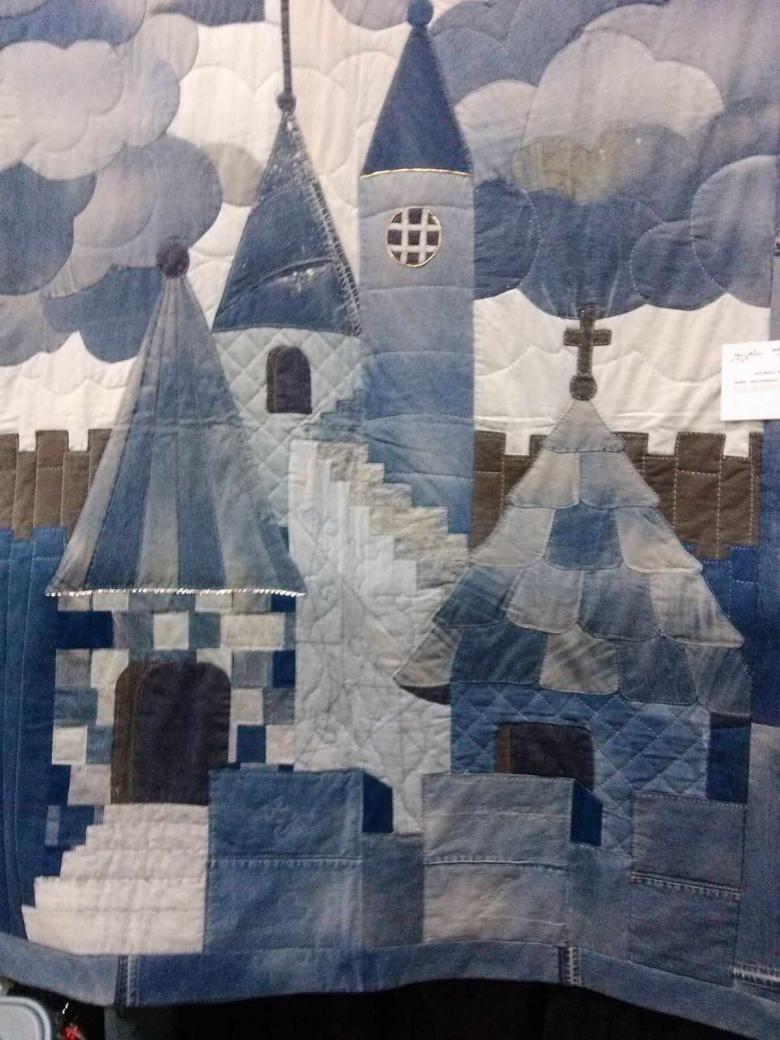
Instructions for execution:
- For the basic color, cut one to one rhombuses of different shades.
- Sew in alternating order or in the manner of spectral descent.
- Draw the decorative details of leaves, animals, ships, stars, bouquets, etc.
- Transfer blanks to jeans. Cut them out, then glue or sew them on.
- Decorate with decorative ornaments.
- The trim is important. Make it out of denim, in the form of woven pigtail.
- Attach on the edges of the image.
- Attach the finished product to the plywood with a glue gun.
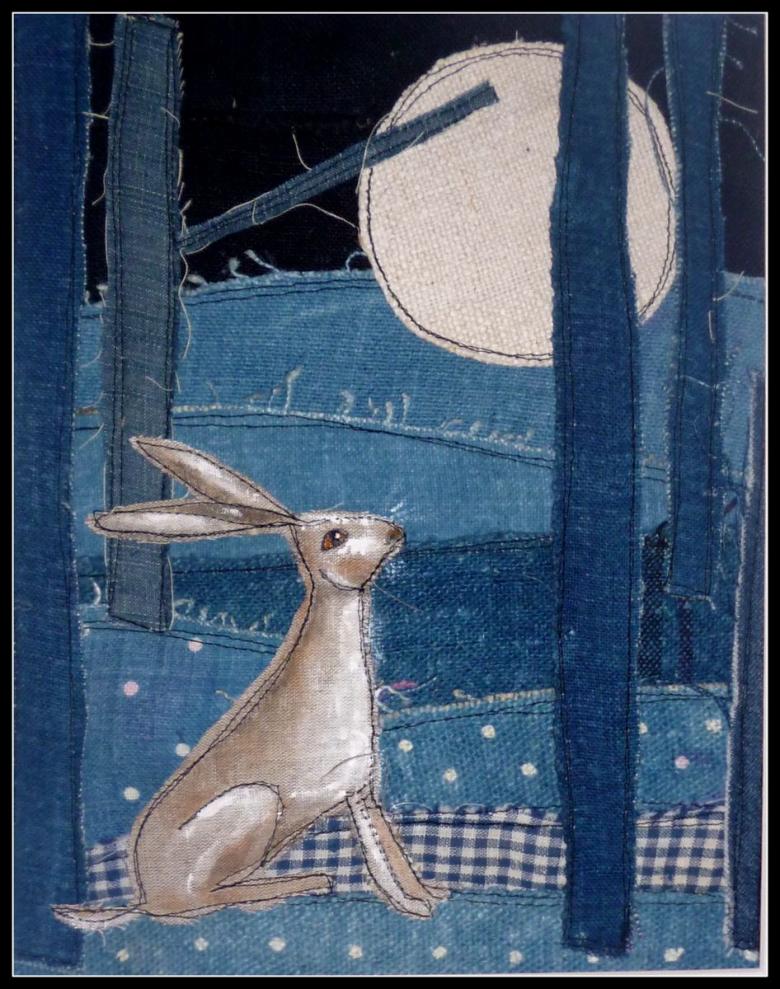
Woven fabric with a smock.
Delicate fabrics, especially when wet, are good for pleats. To make the fabric look damp, but at the same time not give shrinkage, it is soaked with water-diluted PVA glue. Under it is placed crumpled paper. This technique usually depicts: nature, animals, ancient buildings.

Manufacturing:
- Make a sketch of the future image.
- Putted on a flat surface the material is completely covered with a thick layer of glue.
- On the soaked side, place the fabric on the base of the picture, which should be smaller on each side than the piece of fabric.
- Part of your design is almost smooth, the rest is textured.
- Where the background is flat, carefully smooth out the surface with your hands.
- To make creases, squeeze them out by placing paper soaked in glue under the bottom.
- Dry with a fan.
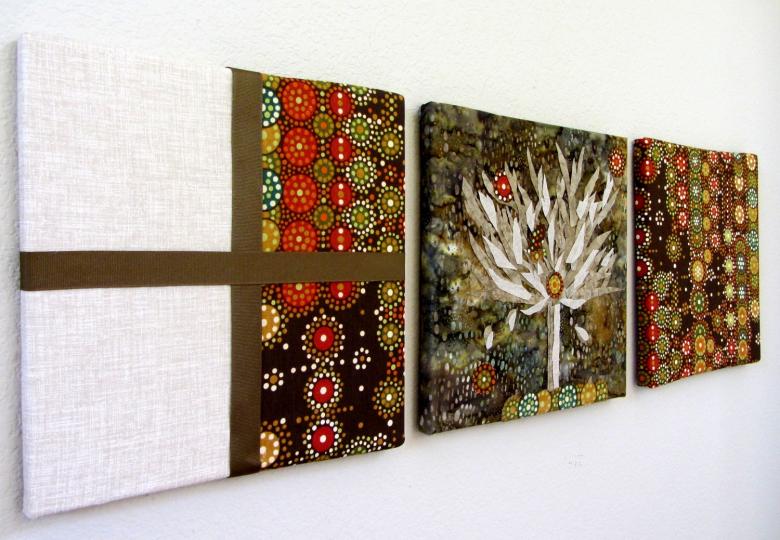
Felt appliqué
Felt is used in sewing, in the manufacture of shoes as abrasives, and its cleanings are used in crafts. Flattened or three-dimensional product made of felt is made quite simply, it turns out bright and original.
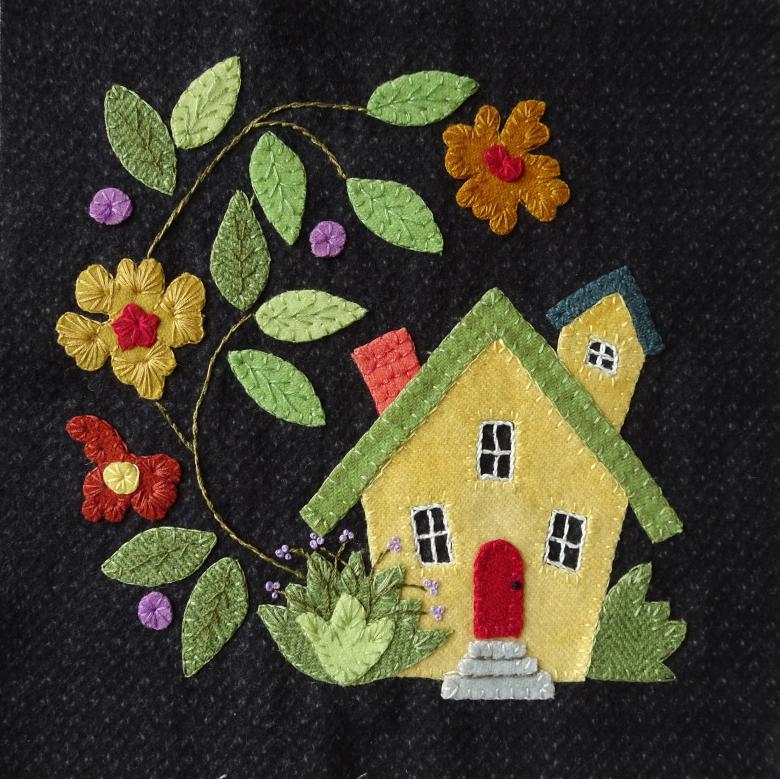
The density of the material is from 1.3 to 5.1 mm, ideal for cutting shapes with a distinct outline. It is used in different ways. Wool - for large ornaments, half-wool - for small ornaments. Fine acrylic, viscose, polyester-for appliques.
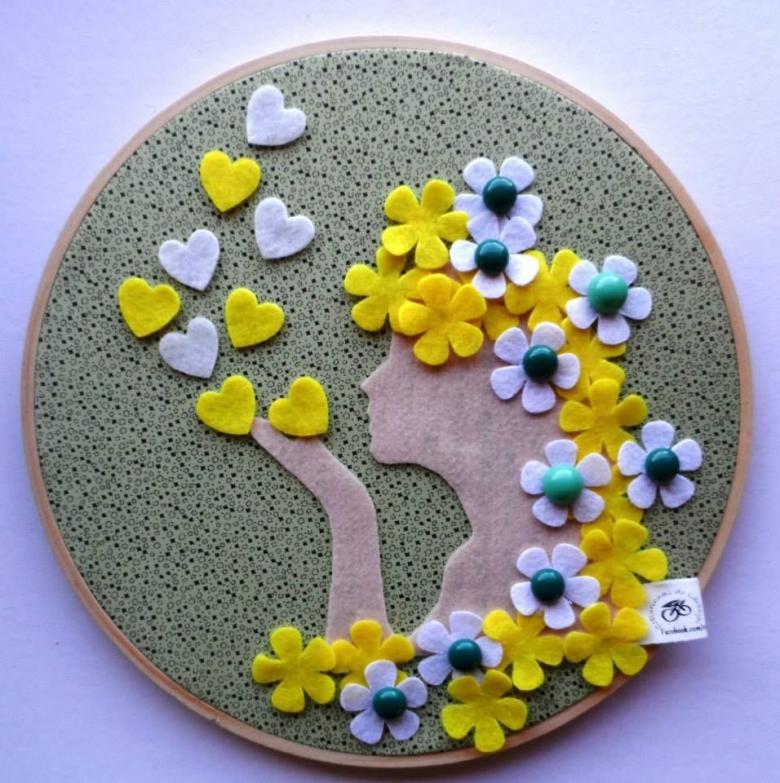
In fabric stores you can often buy complete sets of colored felt in a package, including up to a dozen scraps of different colors and densities.
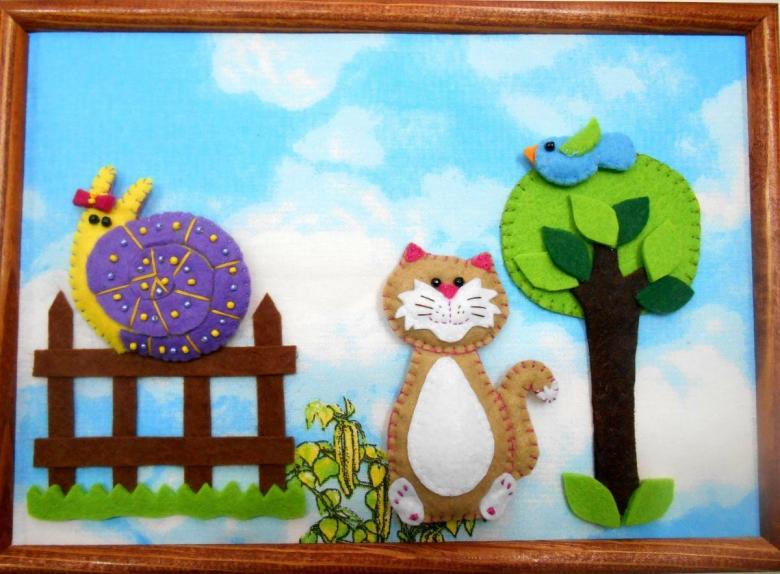
Volumetric options
A number of techniques are used to make the image capacious:
- filler: foam rubber, hollofiber, various textile waste, absorbent cotton;
- crumpled sheets soaked in glue paste placed under the fabric;
- ribbons, balls of textile, braid, florets, made separately and attached to the same color basis;
- starchy parts, attached to the stretched fabric;
- the use of parts in the frame.
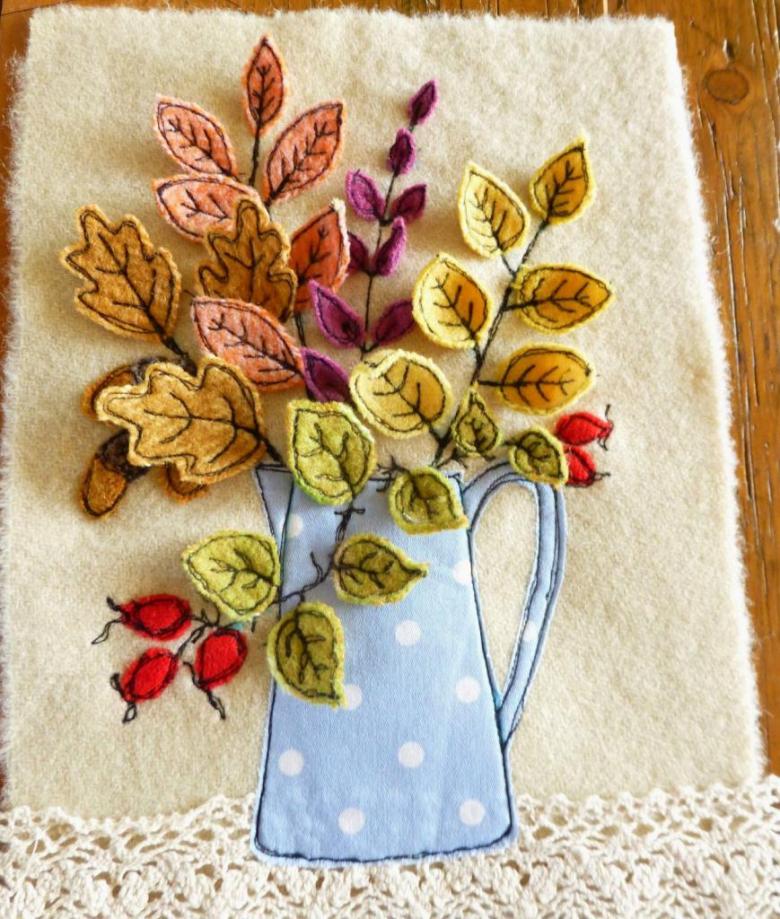
Yarn - String Art.
String Art technique is the original technique of depicting with hundreds of pins nailed to a plate and wire tightened on them. It is allowed to use any yarn, but a reliable one.
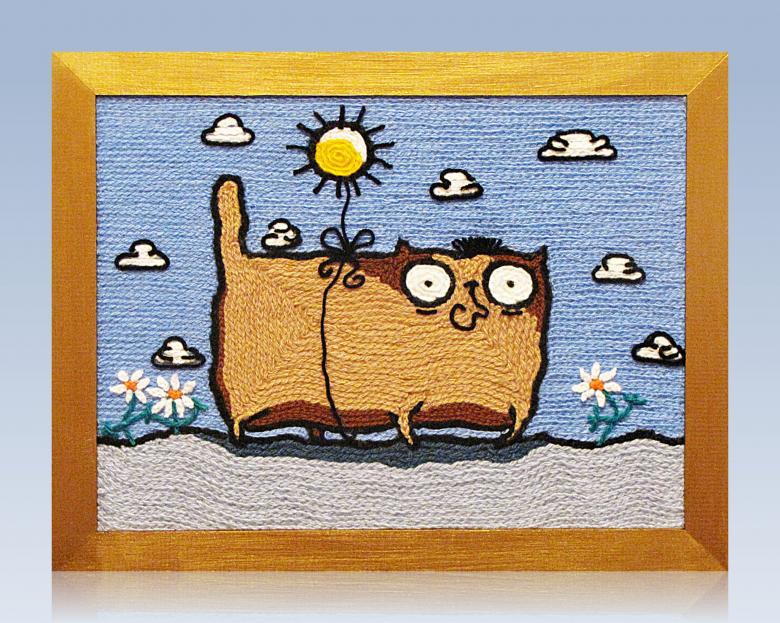
Tighten thoroughly, otherwise, over time, the thread will stretch, the craft will lose its attractive appearance. Nails are hammered on the distance of up to one and a half centimeters from each other.

The product turns out transparent, so it is desirable for it the opposite shade of the background. Such an ornament, embodied on an oval veneer or ring, can represent vivid symbolism or a dream catcher.
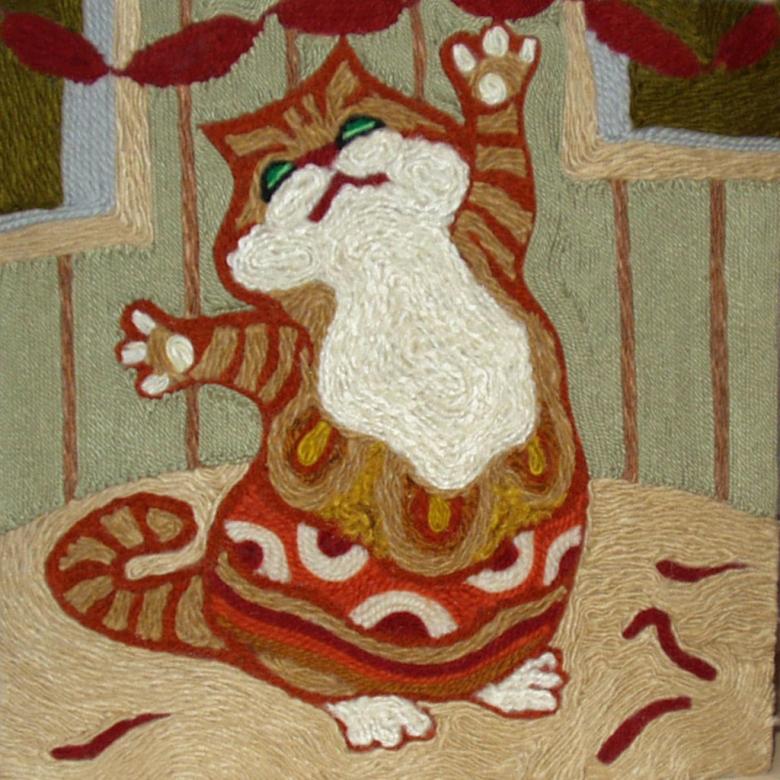
Lace
Few people are now invested in openwork, but such patterned material is very widely used as decoration. Ornate panels are created from purchased fragments or tied by hand with a hook.
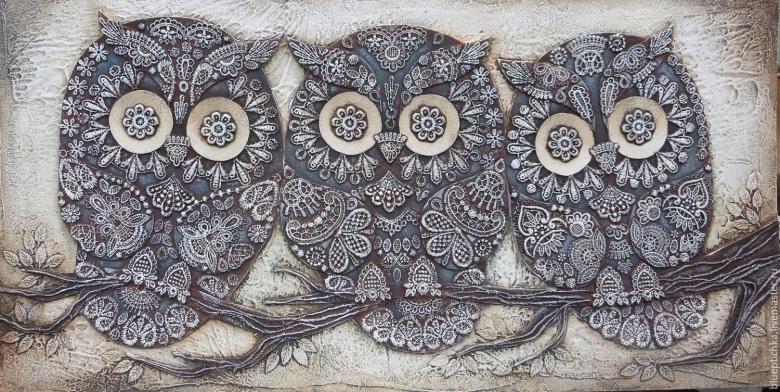
To prevent dust from accumulating on the image, it is placed under a transparent or glass material.
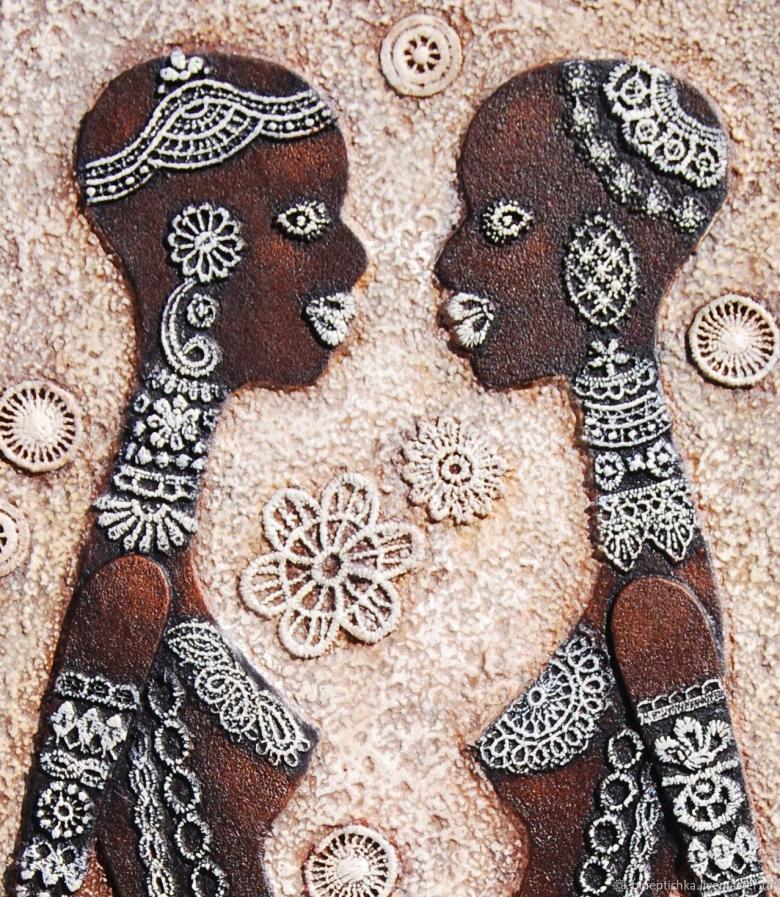
Create a real work of textile art for interior decoration is not difficult, if you have just a few pieces of fabric, thread, needles, scissors. Decorating with fabrics is very popular now.
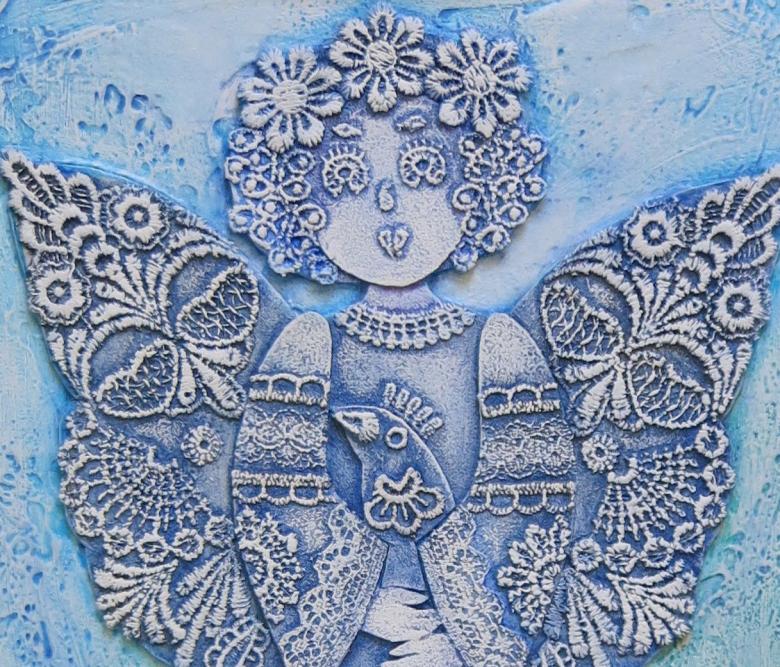
Such works participate in exhibitions, and all new master classes on their production appear on the Internet every day. Some masters even turn their "patchwork hobby" into a very profitable business, creating a series of highly artistic works to order.


